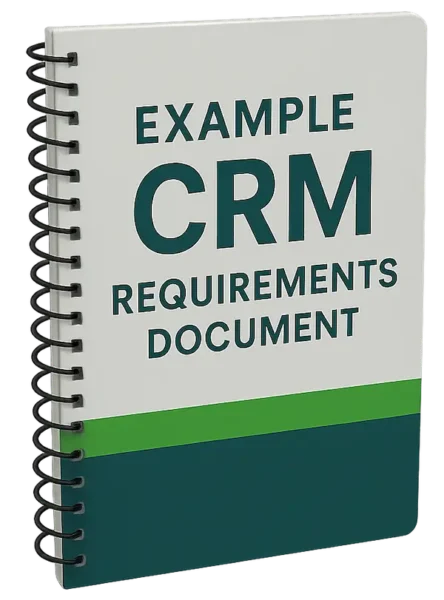Here we are again, with another discussion about CRM user adoption. It was only a few months ago that I wrote about how good leadership can increase user adoption.
However, a recent conversation we had with a prospect who was having difficulty getting his sales team to adopt the company’s CRM solution highlights another side of the issue.

In this particular instance, the company owner described how, despite multiple rounds of training on the platform, user adoption would drop off a week or two after each training session.
The problem ultimately seemed to stem from the fact that, though the owner was heavily invested in the platform, there was a complete lack of support from sales management, which was undermining the owner’s efforts to generate continued user adoption.
This particular example is not unique, and it highlights a problem we frequently encounter in companies that struggle to get end users to adopt a new CRM system: the lack of a company-wide directive to use CRM.
A business (usually) is not a democracy. When an order comes down from management, it’s the staff’s job to execute it. It’s unfortunate whenever we hear about managers and CEO’s buying CRM, implementing it, and then watching as their sales or support teams openly refuse to use it.
Yes, it’s essential to get input and feedback from as many different groups as possible during the CRM planning and selection process, but at the end of the day, it’s a decision made by management. CRM user adoption should not be discretionary; it’s a directive that needs to be presented as such.
How To Enforce CRM Adoption
Of the stories we hear about businesses struggling with user adoption, the majority of them are tied to the company’s sales departments. This isn’t to say other departments don’t battle with system adoption, but rather that sales departments seem to be the most common.
We’ve already covered some of the reasons why salespeople may struggle with CRM adoption, but from a management perspective, here are a couple of suggestions to consider when directing employees to use CRM:
If It’s Not In The System, It Doesn’t Exist
The first time a salesperson loses credit for a lead, opportunity, or sale because they forgot to log it into the CRM system will motivate them to change their ways in a hurry.
Possibly the most direct (and potentially controversial) way to ensure CRM user adoption. Inform your salespeople that any leads, sales, contacts, opportunities, etc., not recorded in the CRM will not be counted or considered in their performance evaluation.
If users have been trained on the system but are still not using it due to personal preference, this will quickly bring their attention to it. The first time a salesperson loses credit for a lead, opportunity, or sale because they forgot to log it into the CRM system, they will be motivated to change their ways in a hurry.
Watching The Dashboard
A great way to get both managers and sales reps invested in using CRM is to set up a sales-specific dashboard. Dashboards can provide users with a variety of helpful information at a glance, including daily and weekly call counts, a running tally of won opportunities, and open lead counts by representative, among other details.
The benefit for managers (and CEOs) is a real-time performance evaluation of both the team as a whole and individual performance. When used in conjunction with the previous suggestion above, it makes for a very compelling case for users to adopt CRM.
Also, by giving each rep a visual readout of not just their own performance, but the performance of every other rep in the company, it can be a great competitive motivator and encourages reps to log things in on a regular basis to “bump up their stats” on the dashboard.
Use It, Don’t Lose It
CRM systems cost time and money. That’s a fact. For every user a company is paying for to have access to CRM that isn’t using it, a company is literally throwing money away every month.
Businesses that realize this generally come to one of two conclusions: get rid of CRM and eliminate the cost of the system if nobody will use it, OR find a way to increase user adoption and start getting the value out of CRM that persuaded management to buy it in the first place.
A well-implemented CRM system with high user adoption will make salespeople more effective, more efficient, and ultimately more productive. It’s been proven many, many times.
If your business is struggling with CRM user adoption, don’t abandon the project at the one yard line after you’ve done the work to gain the previous ninety-nine. Change can be tough, but it’s frequently also necessary. Issue a directive to employees that system adoption is not at their discretion, it’s a directive.



